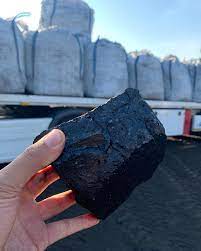Introduction:
In the oil and gas exploration industry, drilling fluids are crucial components that facilitate efficient drilling operations. These fluids are designed to perform multiple functions, such as lubricating the drill bit, carrying cuttings to the surface, stabilizing the wellbore, and controlling pressure. One of the key additives that enhance the performance of drilling fluids is Gilsonite, a naturally occurring hydrocarbon resin. This naturally sourced material is highly valued in the oil and gas industry due to its exceptional properties, which improve the performance of drilling fluids in extreme conditions. In this article, we will explore how Gilsonite is used in drilling fluids, the benefits it provides, and why it is considered an indispensable additive in modern oil and gas drilling.
What is Gilsonite?
Gilsonite is a naturally occurring bituminous material, often referred to as natural bitumen or asphaltite. Unlike conventional petroleum-based products, Gilsonite is a natural resin derived from surface mines. It has a high carbon content and is characterized by its dark black color, high softening point, and low solubility in most solvents. These properties make Gilsonite an ideal choice for applications in which high thermal stability, viscosity control, and fluid loss prevention are essential, such as in oil and gas drilling.
Gilsonite is mined from naturally occurring deposits, which are found primarily in the western United States, particularly in areas such as Utah. The mining process ensures that the material retains its high-quality, natural properties, making it an ideal additive in drilling fluids.
How Gilsonite Enhances Drilling Fluids
Drilling fluids, also known as mud, are a fundamental component of the drilling process. They serve multiple purposes, including cooling the drill bit, stabilizing the borehole, and transporting the rock cuttings to the surface. Gilsonite is added to drilling fluids to optimize several aspects of these operations, especially when drilling in challenging conditions.
1. Viscosity Control
One of the most important characteristics of drilling fluids is their viscosity. Viscosity refers to the fluid’s resistance to flow, and it plays a critical role in ensuring that the fluid can lift the cuttings from the bottom of the well to the surface. If the viscosity is too low, the fluid cannot effectively carry cuttings, and if it is too high, it can lead to pump failure and increased operational costs.
Gilsonite acts as a viscosity modifier in drilling fluids, allowing the fluid to maintain the optimal viscosity even in extreme temperature and pressure conditions. This makes it particularly valuable when drilling deep wells or operating in high-temperature environments. The high softening point of Gilsonite ensures that it does not break down or lose its viscosity even under the intense heat generated during drilling.
By incorporating Gilsonite into drilling fluids, operators can achieve the ideal viscosity levels required for efficient drilling and increased drilling performance.
2. Fluid Loss Prevention
Fluid loss refers to the phenomenon where the drilling fluid seeps into the porous rock formation. This can lead to a variety of problems, including the loss of drilling mud, the destabilization of the wellbore, and an increase in the cost of operation. Gilsonite helps mitigate this issue by enhancing the sealing properties of the drilling fluid.
When added to drilling fluids, Gilsonite forms a seal over the surface of the rock, reducing fluid loss into the formation. This is particularly important when drilling in formations with high permeability, such as shale or sandstone. The high carbon content of Gilsonite helps create a more efficient barrier, which minimizes the loss of valuable drilling fluid into the surrounding formation, thereby reducing costs and improving the overall efficiency of the drilling process.
3. High Thermal Stability
Drilling fluids must be able to withstand extreme temperature fluctuations. As drilling depths increase, so does the temperature at the drill bit. In deep-well drilling, the temperature can exceed 350°F (177°C), and many conventional drilling fluids begin to break down at these temperatures, leading to poor performance and increased maintenance costs.
Gilsonite is prized for its thermal stability. It has a high softening point, typically between 130°C and 220°C, which allows it to retain its properties even at the elevated temperatures found in deep-well drilling operations. This characteristic ensures that Gilsonite-enhanced drilling fluids remain effective in high-temperature environments, leading to fewer failures and more efficient drilling operations.
In addition to temperature stability, Gilsonite also helps maintain the rheological properties of drilling fluids under extreme conditions. This makes it a reliable and effective additive for high-temperature drilling operations.
4. Improved Borehole Stability
Borehole stability is a critical aspect of drilling operations. A stabilized wellbore prevents issues such as wellbore collapse, excessive friction, and stuck pipe, which can lead to costly downtime and even blowouts. Gilsonite contributes to borehole stability by increasing the strength of the drilling fluid and improving its ability to support the wellbore structure.
In addition to improving fluid viscosity, Gilsonite also enhances the elasticity of drilling fluids, allowing them to better conform to the shape of the wellbore and reduce the risk of collapse. This is particularly valuable in difficult formations where maintaining wellbore integrity is a significant challenge.
By adding Gilsonite to drilling fluids, operators can achieve superior wellbore stability, resulting in a safer and more efficient drilling process.
The Advantages of Using Gilsonite in Drilling Fluids
1. Cost-Effective Solution
Although Gilsonite may represent an additional cost when compared to traditional drilling fluid additives, its use often leads to significant long-term cost savings. The reduced fluid loss, improved viscosity control, and better wellbore stability that Gilsonite provides can help reduce the need for costly interventions and repairs. In addition, Gilsonite-enhanced drilling fluids are less likely to require frequent replacement, which further contributes to cost savings over the life of the well.
2. Increased Drilling Efficiency
By improving the performance of drilling fluids, Gilsonite helps enhance overall drilling efficiency. Drilling operations become faster and more efficient due to the optimal viscosity, improved thermal stability, and reduced friction provided by Gilsonite-modified drilling fluids. This leads to shorter drilling times, which directly translates to cost savings and increased productivity.
3. Environmentally Friendly
Gilsonite is a naturally occurring material, which makes it an environmentally friendly choice compared to synthetic additives commonly used in drilling fluids. Unlike petroleum-based chemicals, Gilsonite is non-toxic and biodegradable, making it a safer option for both the environment and the workers handling it.
Conclusion
In conclusion, Gilsonite is a valuable additive in drilling fluids, offering several benefits that improve the overall efficiency and effectiveness of drilling operations in the oil and gas industry. Its unique properties, such as high thermal stability, viscosity control, and fluid loss prevention, make it an indispensable component of modern drilling fluids, particularly in challenging drilling environments.
By incorporating Gilsonite into drilling operations, oil and gas companies can enhance the performance of their drilling fluids, reduce operational costs, and improve safety. Its environmentally friendly nature and cost-effectiveness further make Gilsonite an attractive choice for businesses looking to optimize their drilling performance.
As the demand for energy continues to rise, Gilsonite will remain a key ingredient in ensuring that oil and gas exploration remains efficient, cost-effective, and environmentally sustainable. Operators who recognize the value of Gilsonite and utilize its full potential in their drilling fluids will be better positioned to succeed in the highly competitive oil and gas industry.



